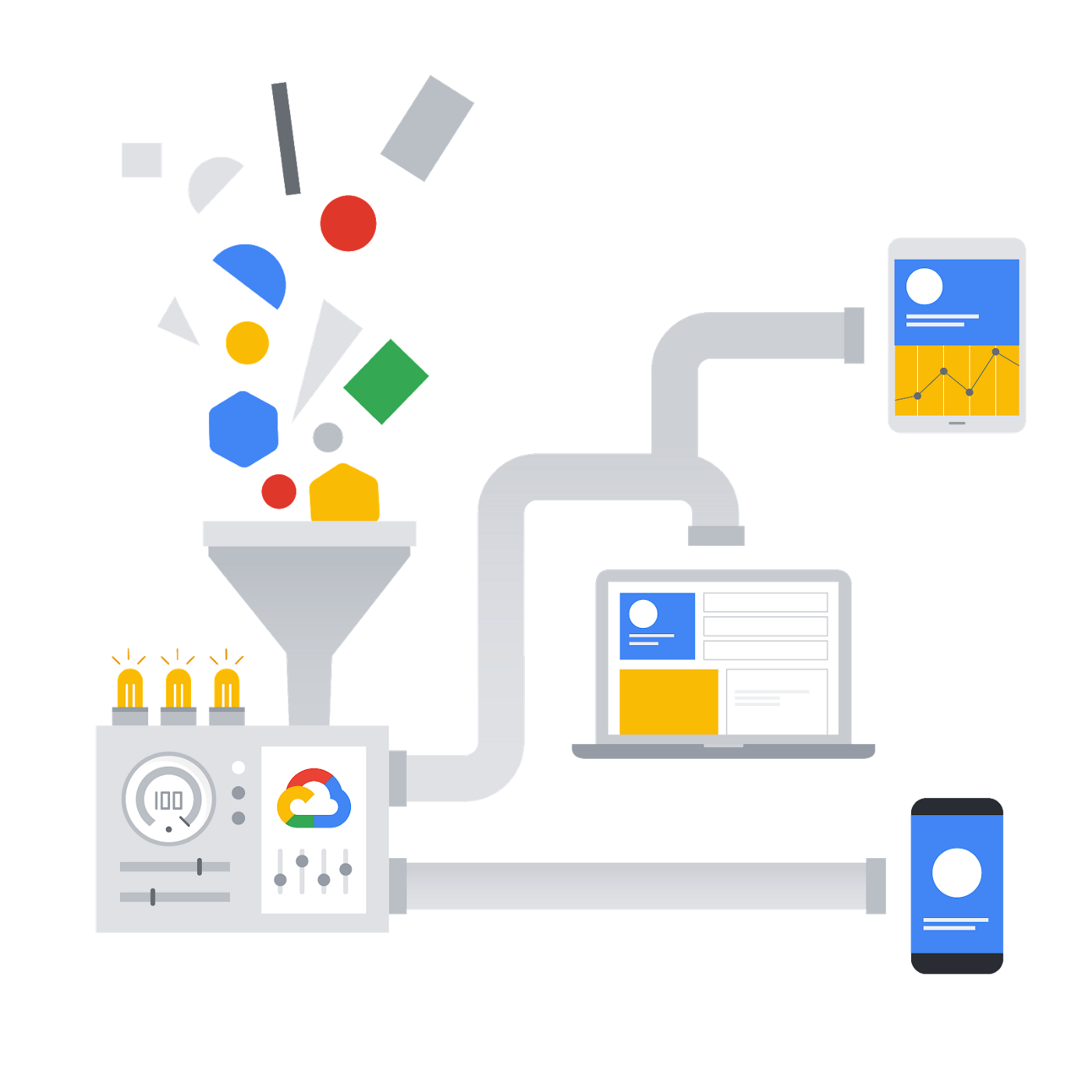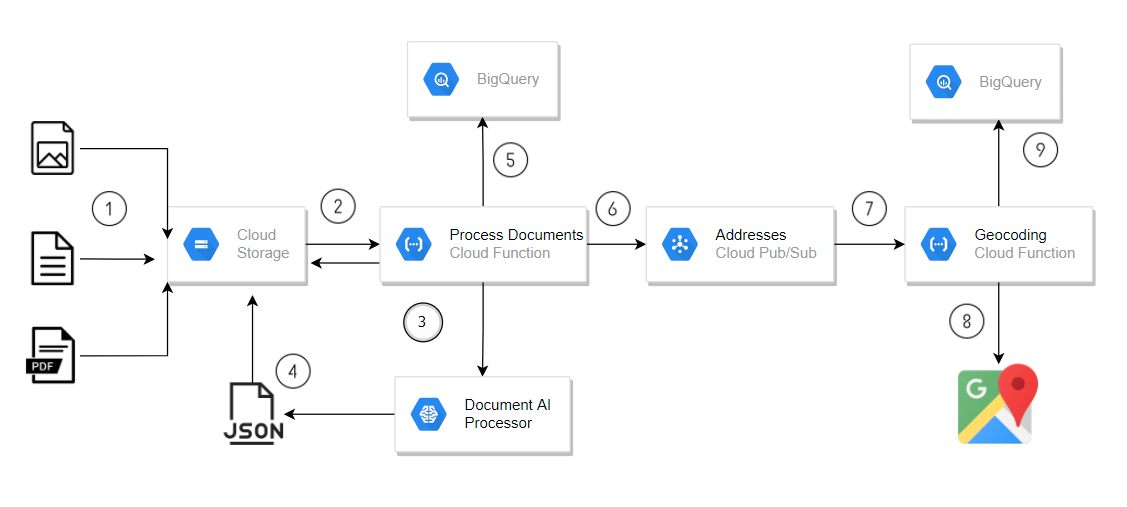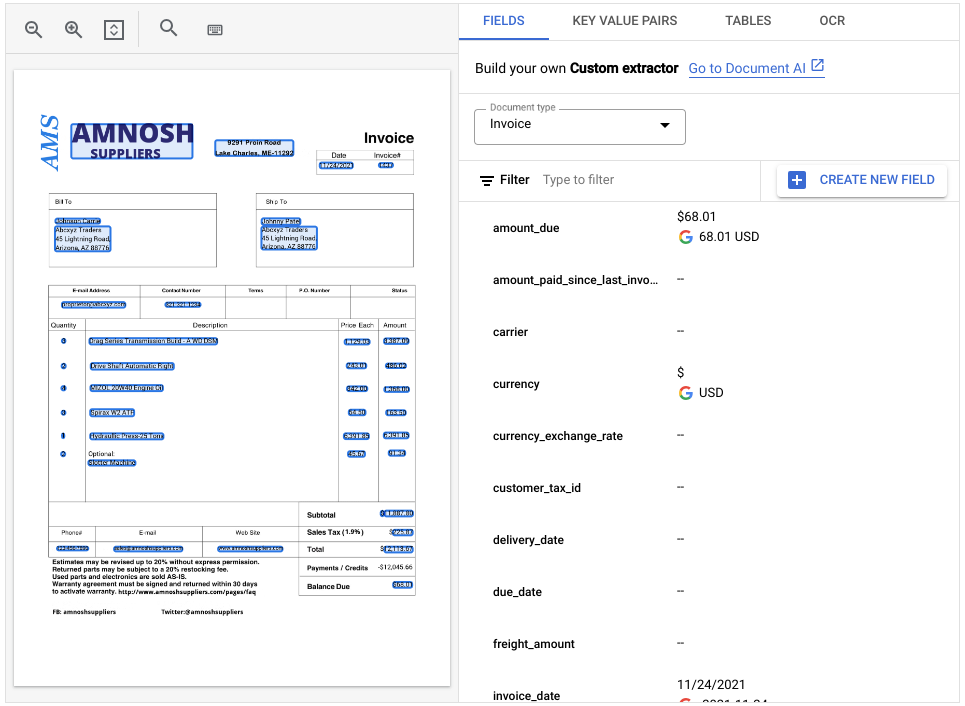It is hard to imagine an organisation that doesn’t handle multiple documents every day: invoices, offers, receipts terms of use etc. Cloud Document AI leverages machine learning to extract data from unstructured documents.
Many businesses have years of data stored in documents such as financial statements, receipts, contracts, invoices, etc. Document AI technology helps organisations analyse and digitise these documents much faster than they could by hand, while reducing human error.
It can be trained to analyse an organisation’s documents to find relevant information and data insights, and can categorise and label the documents to make them easier to utilise. Let’s find out how.
Extract structured data from unstructured documents
Your documents, whether they are contracts, invoices or any other type of document may come in a variety of formats. Most commonly, they are PDFs, or images (PNG, JPG etc.) if e.g. scanned from a paper document. What they have in common is that they are usually unstructured or semi-structured documents that require document layout analysis to extract enterprise-relevant data.
Unstructured data (also called dark data) is difficult to use.

If you want to automate processes or for analytics and use the valuable data, you will need to make use of unstructured business documents and transform them into readable data sources. And if you don’t have a team of data scientists at your disposal, it’s best to use tried and true solutions available on the market.
Manual effort vs. automated object detection
There are 3 main methods of extracting structured data from documents:
- Manual data entry. The most old-school approach, where e.g. a junior accountant manually enters all invoice data for the company’s customers into the accounting software. It’s a work-intense and time consuming process that, because it is repetitive and usually delegated to junior personnel, is very prone to mistakes.
- Semi-automated data extraction is possible from a fixed layout with Optical Character Recognition OCR technology. If your company uses standard forms, they are what we call semi-structured data sources. Extracting structured enterprise data from them requires dedicated software, but can be done efficiently. The limitations of this approach include: each page needs to conform to the standard layout and the extracted information may still be subject to human review.
- Using AI and Machine learning technology, you can automatically read documents, parse text and extract information. The ability to find structure in unstructured sources reduces data entry toil and eliminates human error and greatly increases operational efficiency. The document processing AI capabilities for extracting structured data are accessible from a Google Cloud console. Because Document AI is a cloud-based service, it is perfectly scalable as the volume of the input sources changes.
Document AI tasks and tools
Google Cloud’s Document AI is an end-to-end cloud-based platform for processing different document types. Its key features include not only being able to read but also to understand documents.
In order to understand text and transform documents to extract key information, Google Cloud Document AI uses state-of-the-art machine learning technology, including:
- Optical Character Recognition (OCR) allows software to “read” the printed or even handwritten text and translate it into a digital format. Great advancements have been made in the OCR technology over the past two decades.
- Image recognition and document image classification using:
- Natural Language Programming (NLP) – the cornerstone of language models that allows machines to interpret, comprehend and manipulate human languages;
- Entity extraction – object detection, for example table detection makes data more readable and easier to contextualise.
- Machine translation – a very frequently used option which allows people to communicate across languages. Google Cloud’s machine translation software supports over 133 languages.
Benefits of Document AI
By classifying documents with Document AI you can speed up data preparation and analytics.
Analytics on customer feedback
By analysing e.g. customer surveys in the form of e.g. paper feedback forms, stores can pool and analyse the information quickly. This way they can efficiently devise and implement changes to meet client expectations, deliver services faster and increase customer satisfaction.
More data sources to your dashboard
By incorporating multiple sources of information, your insights will be data-driven and your decisions will be better informed. Document AI seamlessly integrates with BigQuery, Vertex Search, and other Google Cloud products.
No data science expertise required
The real game changer with Document AI is that it works with any type of document and doesn’t require special data science skills to use it. Google has provided an easy to use API to help you integrate it with other Google Cloud services.
Let’s take a look at how it works. You can find detailed instruction on How to set up Document AI API on Google’s website.
How does Document AI work?
Document AI is a Google Cloud managed service that uses pre-built models for standard documents as well as generative AI for high-variance docs, like invoices.

Its functionality depends on the type of AI you choose:
General Doc AI
It works with virtually any document in any format. The technology used includes:
- OCR – to extract text from e.g. a scanned page,
- a structured form parser, which can understand form fields in the document, including table headers and rows,
- document quality analysis, which assesses the quality of the scanned document.
Specialized Document AI
This one employs Google’s dataset of standard documents to simplify the extraction process. Standard documents include e.g. driver’s license, as well as invoices and receipts.

Custom models AI
Google is working on providing you with tools to train your own custom models or up-train existing ones without any coding.
How to train Document AI?
The training process involves five steps that allow Document AI to learn how to effectively analyse and process documents in your organisation.
Ingest
The AI is provided with a wide variety of documents. Document AI automatically recognises various data types and formatting within the documents.
Label
The initial data provided to the model must be labelled in order to prepare the training data for the learning process. Labeling existing data shows the AI model what to look for in the documents it analyses.
Train
The AI learns from the document set and creates an ML model specialised to the desired tasks.
Deploy
The newly created model must be deployed into a workable environment so it can be used with new input documents.
Consume
The model is ready to be used for business applications. Users continue to provide oversight and make any necessary adjustments.
Once trained, a Document AI model will be able to read and recognise text and other document formats, extract desired data from new documents based on prepared input, and generate important insights based on the data extracted.

Common use cases for Document AI
Document AI is especially useful for tasks where a large number of documents containing potential insights must be analyzed quickly and efficiently. There are several industries in which this is useful:
Legal Documents
Lawyers are often responsible for interpreting many documents related to their cases and clients. Whether they are reviewing laws and regulations, preparing for a case, or going over contracts, documents and information are their bread and butter.
Document AI helps legal teams digitize and sort through documents to find the most relevant information.
Insurance agencies
When insurance companies take on new commercial clients, reams of data and documentation must be analyzed to fully understand a client’s needs and risks. Document AI improves this process by automating administrative tasks and providing important insights from the data provided.
Banking/Finance
In commercial banking it is often necessary to review a large amount of documentation in order to understand financial and legal risk. Document AI can process and analyze financial documents to aid in client onboarding and loan approval.
Ask a Google Cloud partner
If you want to learn more how to utilise the power of Document AI in Google Cloud, contact a certified Google Partner. Contact and FOTC expert and let certified Google Cloud engineers guide you through the process.
